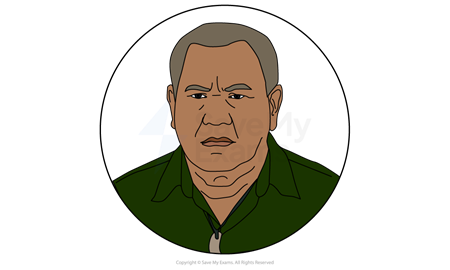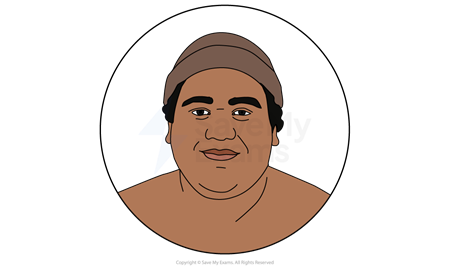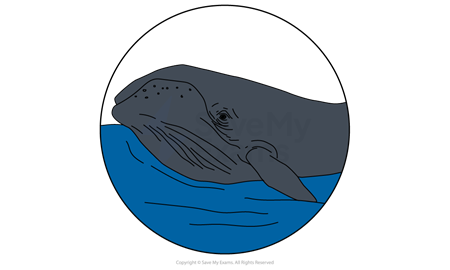The Whale Rider: Characters (Edexcel IGCSE English Literature): Revision Note
Exam code: 4ET1
In your answer to the The Whale Rider question, remember that characters represent a group of people or an idea about society. Ihimaera’s characters, for example, contrast with each other. This choice helps to illustrate differences between social groups and reflect contemporary debates.
Characterisation is a writer’s method and it’s good to use this word in your responses. Characterisation can include:
How characters are established
How characters are presented:
Their physical appearance
Their actions and motives
What they say and think
How they interact with others
What others say and think about them
How far the characters conform to or subvert stereotypes
Their relationships to other characters
Below you will find character profiles of:
Main characters
Kahu Apirana
Koru Apirana
Rawiri Apirana
Nanny Flowers
Other characters
Porourangi Apirana
The bull whale
Jeff
Kahu Apirana

The protagonist, Kahu, is immediately established as a significant member of the Māori village: she is named after the original whale rider, Kahuti Te Rangi
Ihimaera’s portrayal of Kahu is sympathetic:
She struggles to fulfil her destiny as the whale rider as she is a female successor
She is separated from her immediate family after her mother’s death and raised by her maternal grandmother
Ihimaera delivers key ideas about family, tradition, and progress through Kahu:
As a female successor, she causes family conflicts about tradition
She represents a modern female close to her heritage
Kahu’s unjust alienation hinders the tribe’s future
Kahu symbolises a return to harmony in the tribe and with the natural world:
In the resolution, Kahu rescues the whales and reunites the family
She is willing to sacrifice herself for her people: “I am not afraid to die”
Koro Apirana

Koro’s character is presented as the strict, elderly patriarchal Whangara chief:
He is knowledgeable and passionate about Māori tradition and culture
Ihimaera’s characterisation of the powerful chief facing modern problems symbolises the struggle between tradition and modernity:
His refusal to accept Kahu raises gender and cultural issues
However, his love of the Māori culture presents him as well-intentioned
In the resolution, his acceptance of Kahu reconciles the family
Ihimaera characterises Koro as excessive in his actions:
Koro’s persistent shunning of Kahu portrays his stubbornness
His marriage is harmed because of his traditional outlook
Examiner Tips and Tricks
Often, ideas are conveyed by the character’s progression. This is why it is important to revise each character’s development (or “journey”) in the novel. For example, Koro’s stubbornness presents tradition as fixed and narrow-minded. But his acceptance of Kahu in the resolution revises this idea to show he, and therefore cultural custom, is capable of change.
Rawiri

Ihimaera uses a character with a neutral position to narrate: Rawiri Apirana, the younger brother of Porourangi, is not an heir:
As a quiet, calm member of the family, he is a reliable narrator
He provides distance as he relates Kahu’s spiritual journey
This objectivity places the magical events firmly in reality
Rawiri symbolises the search for identity and belonging in a traditional world:
However, his journey to Australia also highlights post-colonial discrimination
His experiences abroad deepen his understanding of discrimination and help him reconnect with his Māori identity
Rawiri’s return to Whangara shows him as a loving, loyal family member
Nanny Flowers

Nanny Flowers is the foil to Koro, her husband, as she is patient and caring and understands the younger generation:
She represents a harmonious integration of the past and the future
Like Kahu, her character subverts gender and age expectations:
She is rebellious: she commandeers a motorboat to chase Koro and challenges his authority
She is a significant role model to Kahu, encouraging her and supporting her
Her likeable character allows Ihimaera to convey themes about family love:
She manages Koro’s stubborn nature, and guides Kahu to wait until the time is right to prove her destiny
Porourangi

Through Porourangi Apirana, Kahu’s father, Ihimaera illustrates how tradition can create conflict:
Porourangi is caught between his duty as Koro’s successor and protecting his new daughter
Although the natural successor, he declines the leadership role, indirectly increasing the pressure on Kahu
Porourangi is characterised as an honest, kind father, although he does not raise Kahu and remarries to start a new family
The bull whale

Ihimaera tells the story of the original whale from Māori legend:
He is characterised as a mystical creature with a tattoo of a sacred symbol
He is a spiritual symbol of the past and generational continuity
The whale is the narrator of alternate chapters
The whale shares similar characteristics to Koro:
He is stubborn and nostalgic for the past
However, the whale story runs parallel with Kahu’s to illustrate their bond:
They both lose their mother, leave home, and become wise leaders
Examiner Tips and Tricks
When you answer the exam question, remember that characters have been created by the writer to deliver an idea. It is then your task to explore those ideas.
For example, you could write that “Ihimaera’s characterisation of Kahu, a female successor to a patriarchal chief, raises ideas about outdated and discriminatory traditions”.
Jeff

Jeff, a European settler, represents colonial discrimination and racism:
Jeff becomes Rawiri’s best friend in Australia
In Papua New Guinea, on Jeff’s family plantation, Ihimaera illustrates the family’s casual racism towards Rawiri and the workers
The climatic event, when Jeff kills Rawiri’s worker friend Bernard and his parents dismiss it because he is a “native”, is a turning point for Rawiri

Unlock more, it's free!
Did this page help you?